 W
WThe 4th Marine Regiment is an infantry regiment of the United States Marine Corps. Based at Camp Schwab in Okinawa, Japan, it is part of the 3rd Marine Division of the III Marine Expeditionary Force.
 W
WThe 31st Infantry Regiment of the United States Army was formed on 13 August 1916, and was part of USAFFE's Philippine Division during World War II. The unit is rare in that it was formed and has spent most of its life on non-American soil.
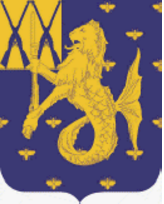 W
WThe 43rd Philippine Scout Infantry Regiment was part of USAFFE's Philippine Division, during World War II.
 W
WBalikatan is the name for the annual military exercises between the Philippines and the United States. It is a Tagalog word meaning "shoulder-to-shoulder". The April 2016 10-day exercises is the 32nd iteration of the Balikatan exercises. The exercises have been the cornerstone of Philippines–United States military relations since the U.S. bases in the Philippines closed.
 W
WBattery Way was a battery of four 12-inch mortars located on the island of Corregidor. Battery Way was one of two mortar batteries at Fort Mills that, with Fort Hughes, Fort Drum, Fort Frank and Fort Wint formed the Harbor Defenses of Manila and Subic Bays. Battery Way was named for Lt. Henry N. Way of the 4th U.S. Artillery.
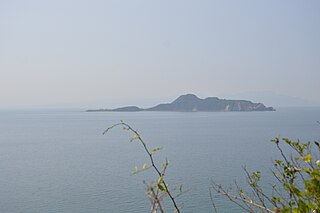 W
WCaballo Island is a bluff, rocky island located at the entrance to Manila Bay in the Philippines. It is about 1.2 km (0.75 mi) long with the highest elevation at 381 feet high. Caballo, along with the larger Corregidor, divides the entrance to the bay into two broad and deep channels, known as the North and South Channel.
 W
WCorregidor Island is an island located at the entrance of Manila Bay in southwestern part of Luzon Island in the Philippines. Due to this location, Corregidor has historically been fortified with coastal artillery to defend the entrance of Manila Bay and Manila from attacks by enemy warships. Located 48 kilometres (30 mi) inland, Manila has been the largest city and the most important seaport in the Philippines for centuries, from the colonial rule of Spain, Japan and the United States, to the establishment of the Philippines in 1946.
 W
WThe Battle of Corregidor, fought May 5–6, 1942, was the culmination of the Japanese campaign for the conquest of the Commonwealth of the Philippines during World War II.
 W
WThe Philippine Department was a regular United States Army unit whose mission was to defend the Philippine Islands and train the Philippine Army. On 9 April 1942, during World War II, the unit surrendered to the Japanese. The Department and its sub-units were predominantly under the command of American officers, including an American general, while the majority of the troops were enlisted Filipinos, known as the Philippine Scouts (PS). The primary force of this Department was the Philippine Division. Of the 22,532 troops, 10,473 were members of the Philippine Division itself.
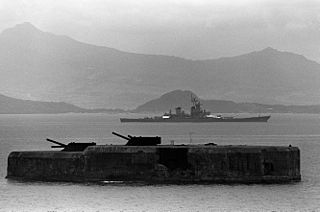 W
WFort Drum, also known as "the concrete battleship", is a heavily fortified island situated at the mouth of Manila Bay in the Philippines, due south of Corregidor Island. The reinforced concrete sea fort shaped like a battleship was built by the United States in 1909 as one of the harbor defenses at the wider South Channel entrance to the bay during the American colonial period.
 W
WFar East Command (FECOM) was a unified combatant command of the United States Department of Defense, active from 1947 until 1957, functionally organised to undertake the occupation of Japan. It was created on 1 January 1947, and abolished, with functions transferred to Pacific Command, effective 1 July 1957. From 1947–51 the Commander-in-Chief, Far East (CINCFE), was General Douglas MacArthur, who was then succeeded by Generals Matthew Ridgway and Mark Clark. Later commanders were Generals John E. Hull, Maxwell D. Taylor, and finally Lyman Lemnitzer.
 W
WOperation Fiery Vigil was the emergency evacuation of all non-essential military and U.S. Department of Defense civilian personnel and their dependents from Clark Air Base and U.S. Naval Base Subic Bay during the June 1991 eruption of Mount Pinatubo in the Philippines.
 W
WFort Frank was one of the defense forts at the entrance to Manila Bay established by the United States. The entire island was designated as Fort Frank, in honor of Brigadier General Royal T. Frank, as part of the Harbor Defenses of Manila and Subic Bays built by the Philippine Department of the US Army in the early 1900s.
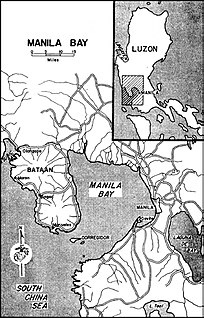 W
WThe Harbor Defenses of Manila and Subic Bays were a United States Army Coast Artillery Corps harbor defense command, part of the Philippine Department of the United States Army from circa 1910 through early World War II. The command primarily consisted of four forts on islands at the entrance to Manila Bay and one fort on an island in Subic Bay.
 W
WThe death of Jennifer Laude, occurred on October 11, 2014, in Olongapo, Philippines, when the 26-year-old Filipina trans woman was killed by Lance Cpl. Joseph Scott Pemberton, a 19-year-old Lance Corporal in the United States Marine Corps. Pemberton admitted assaulting Laude and deployed a trans panic defense in his 2015 trial. His charge was downgraded from murder to homicide by a judge in 2015, and he was convicted on December 1, 2015. Phillippines president Rodrigo Duterte granted an absolute pardon to Pemberton in September 2020.
 W
WThe Malinta Tunnel is a tunnel complex built by the United States Army Corps of Engineers on the island of Corregidor in the Philippines. It was initially used as a bomb-proof storage and personnel bunker, but was later equipped as a 1,000-bed hospital. The main tunnel, running east to west, is 831 feet (253 m) long, 24 feet (7.3 m) wide and 18 feet (5.5 m) high. Branching off from this main shaft are 13 lateral tunnels on the north side and 11 lateral tunnels on the south side. Each lateral averaged 160 feet (49 m) in length and 15 feet (4.6 m) in width.
 W
WFort Mills was the location of US Major General George F. Moore's headquarters for the Philippine Department's Harbor Defenses of Manila and Subic Bays in early World War II, and was the largest seacoast fort in the Philippines. Most of this Coast Artillery Corps fort was built 1904–1910 by the United States Army Corps of Engineers as part of the Taft program of seacoast defense. The fort was named for Brigadier General Samuel Meyers Mills Jr., Chief of Artillery 1905–1906. It was the primary location of the Battle of Corregidor in the Japanese invasion of the Philippines in 1941–42, and of the recapture of Corregidor in February 1945, both in World War II.
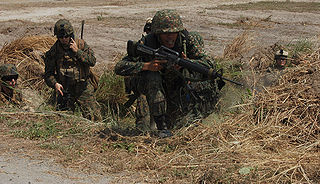 W
WOperation Enduring Freedom – Philippines (OEF-P) or Operation Freedom Eagle was part of Operation Enduring Freedom and the global War on Terror. The Operation targeted the various Jihadist terror groups operating in the country. By 2009, about 600 U.S. military personnel were advising and assisting the Armed Forces of the Philippines (AFP) in the Southern Philippines. In addition, by 2014, the CIA had sent its elite paramilitary officers from their Special Activities Division to hunt down and kill or capture key terrorist leaders. This group had the most success in combating and capturing Al-Qaeda leaders and the leaders of associated groups like Abu Sayyaf.
 W
WThe Philippine Scouts was a military organization of the United States Army from 1901 until after the end of World War II. These troops were generally Filipinos and Filipino-Americans assigned to the United States Army Philippine Department, under the command of American commissioned officers. Philippine Scout units were given the suffix "(PS)", to distinguish them from other U.S. Army units.
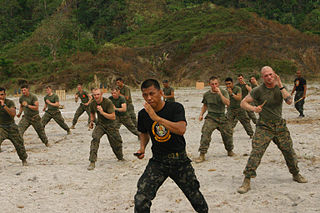 W
WThe Philippines–United States Visiting Forces Agreement, sometimes the PH–US Visiting Forces Agreement, is a bilateral visiting forces agreement between the Philippines and the United States consisting of two separate documents. The first of these documents is commonly referred to as "the VFA" or "VFA-1", and the second as "VFA-2" or "the Counterpart Agreement". A visiting forces agreement is a version of a status of forces agreement that only applies to troops temporarily in a country. The agreements came into force on May 27, 1999, upon ratification by the Senate of the Philippines.[8], [10] The United States government regards these documents to be executive agreements not requiring approval by the United States Senate.[42]
 W
WUnited States Army Forces in the Far East (USAFFE) was a military formation of the United States Army active from 1941 to 1946. The new command's headquarters was created on 26 July 1941, at No. 1, Calle Victoria, Manila, Luzon, the Philippines, with General Douglas MacArthur as commander. The Chief of Staff was Brigadier General Richard K. Sutherland and the Deputy Chief of Staff was Lieutenant Colonel Richard J. Marshall. The core of this command was drawn from the Office of the Military Advisor to the Commonwealth Government.
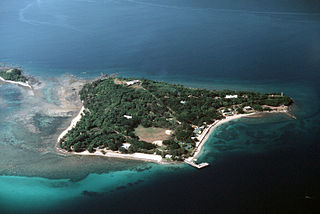 W
WFort Wint was part of the harbor defenses of Manila and Subic Bays built by the Philippine Department of the United States Army between 1907 and 1920 in response to recommendations of the Taft Board prior to the non-fortification clause of the Washington Naval Treaty. Fort Wint was located on Grande Island at the entrance of Subic Bay, approximately 35 miles (56 km) north of Manila Bay. The fort was named for Brigadier General Theodore J. Wint. As specified in the National Defense Act of 1935, this was one of the locations where coastal artillery training was conducted. A battery of the 60th Coast Artillery (AA) was stationed here.